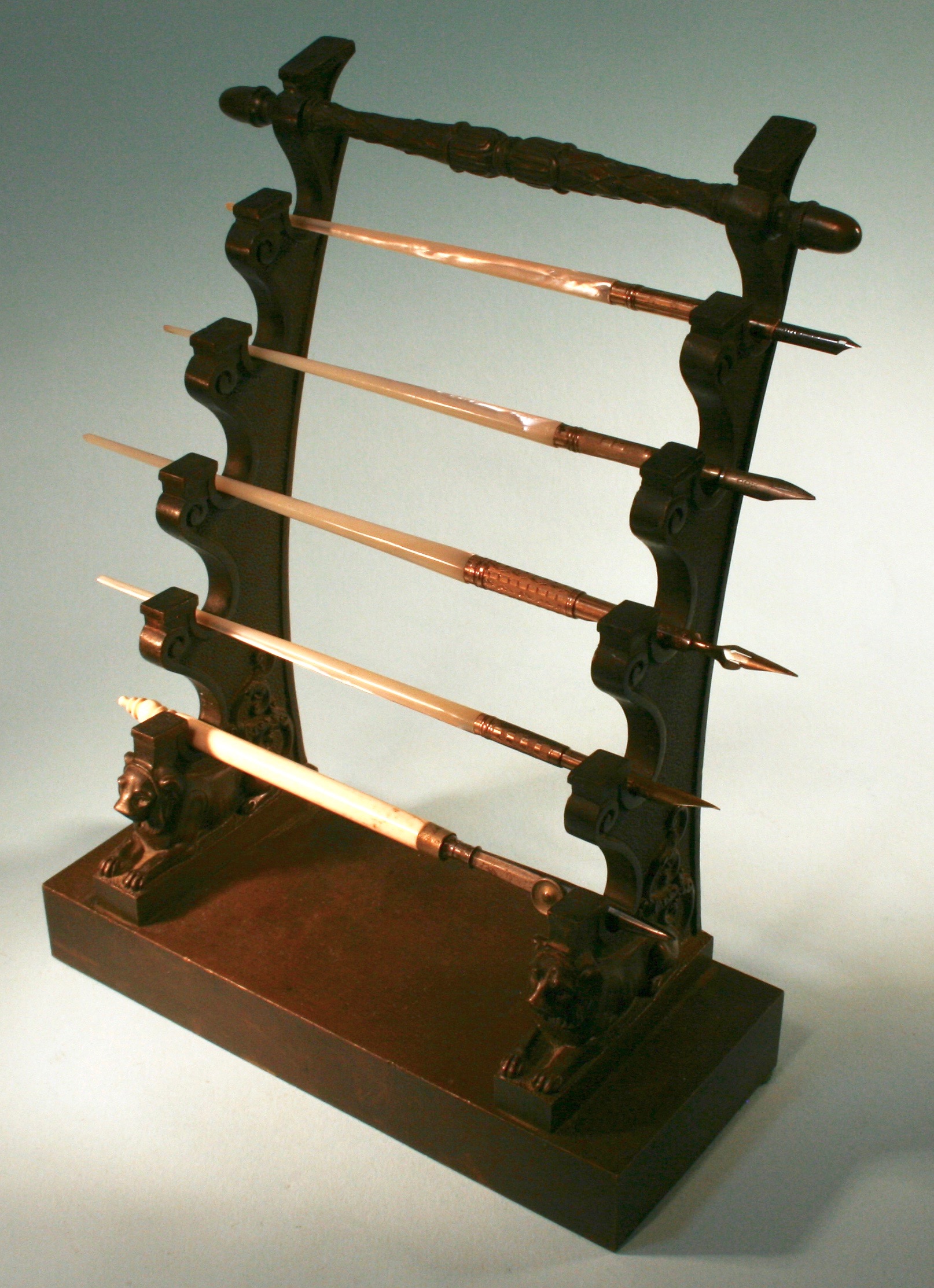

Title: Antique Victorian Bronze Display Pen Stand Holder Tool
Shipping: $29.00
Artist: N/A
Period: 19th Century
History: N/A
Origin: North America > United States
Condition: N/A
Item Date: N/A
Item ID: 65
Incredibly rare one-of-a-kind Desk display Pen Holder. A fabulous antique bronze Victorian display pen stand holder. What makes this so unusual, that these usually were custom-made for the very rich, and are extremely hard to find In the open market. Pen Collectors want to show off their collection with this kind of Rare Display Stand. If you wanted to make this today In bronze, it would cost you a fortune. The great civilizations of the old world worked in bronze for art, from the time of the introduction of the alloy for tools and edged weapons. Very few large ancient bronzes have survived, as many were melted down to make weapons or ammunition in times of war or to create new sculptures commemorating the victors, while far more stone and ceramic works have come through the centuries, even if only in fragments. Why using bronze is so desirable. Casting bronze sculptures. Many common bronze alloys have the unusual and very desirable property of expanding slightly just before they set, thus filling in the finest details of a mould. Bronze statues were regarded as the highest form of sculpture in Ancient Greek art, though survivals are few, as bronze was a valuable material in short supply in the Late Antique and medieval periods. Many of the most famous Greek bronze sculptures are known through Roman copies in marble, which were more likely to survive. Bronze is the most popular metal for cast metal sculptures; a cast bronze sculpture is often called simply a "bronze". It can be used for statues, singly or in groups, reliefs, and small statuettes and figurines, as well as bronze elements to be fitted to other objects such as furniture. Before it became possible to produce glass with acceptably flat surfaces, bronze was a standard material for mirrors. The reflecting surface was typically made slightly convex so that the whole face could be seen in a small mirror. Bronze was used for this purpose in many parts of the world, probably based on independent discoveries. Bronze also has very low friction against dissimilar metals, making it important for cannons prior to modern tolerancing, where iron cannonballs would otherwise stick in the barrel.
“It's ridiculous how expensive bronze has become! How to identify bronze. If the piece is golden yellow, it is brass. (If it is heavy and golden color could be gold, of course.) Brass is widely used because it does closely resemble gold. In medal rank, brass is beneath bronze: Gold, Silver, Bronze, Brass. If there were four platforms at Olympic Games, the lowest one would be brass. Bronze is more important than brass in the public’s mind. Bronze is more expensive than brass. Zinc is cheaper than copper. The greater the zinc content the less the cost, and certain bronze alloys are four times more expensive than certain brass alloys. Thus bronze has the perception of greater value than brass. Bronze is more éclat, it has a higher esteem, respect, repute, and is more desirable to everyone.
Link: https://en.wikipedia.org/wiki/Bronze_sculpture
Bronze is the most popular metal for cast metal sculptures; a cast bronze sculpture is often called simply a "bronze". It can be used for statues, singly or in groups, reliefs, and small statuettes and figurines, as well as bronze elements to be fitted to other objects such as furniture.